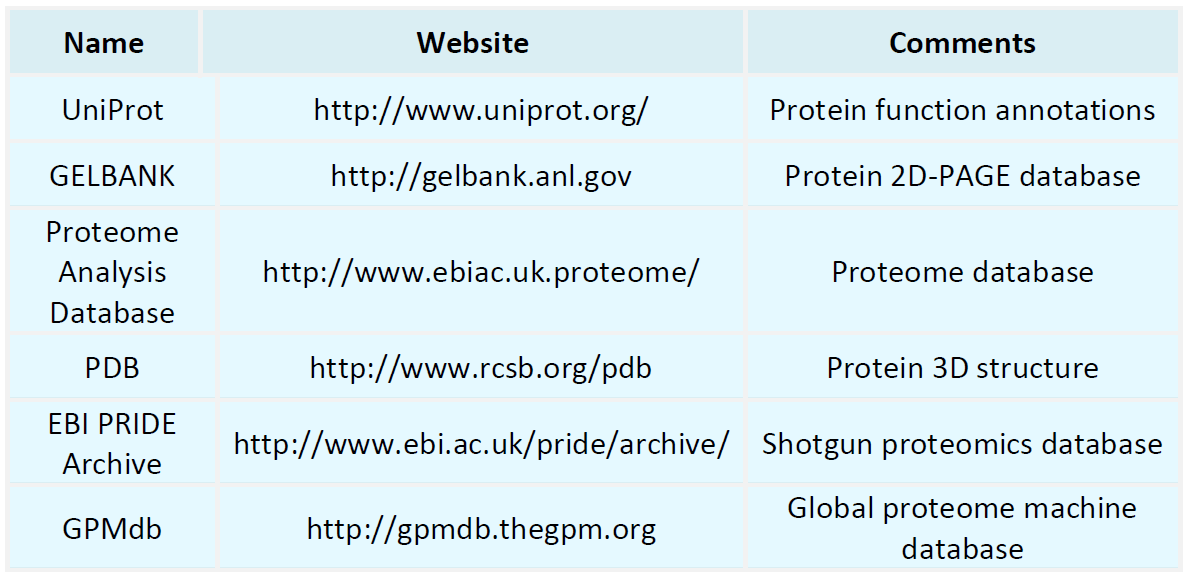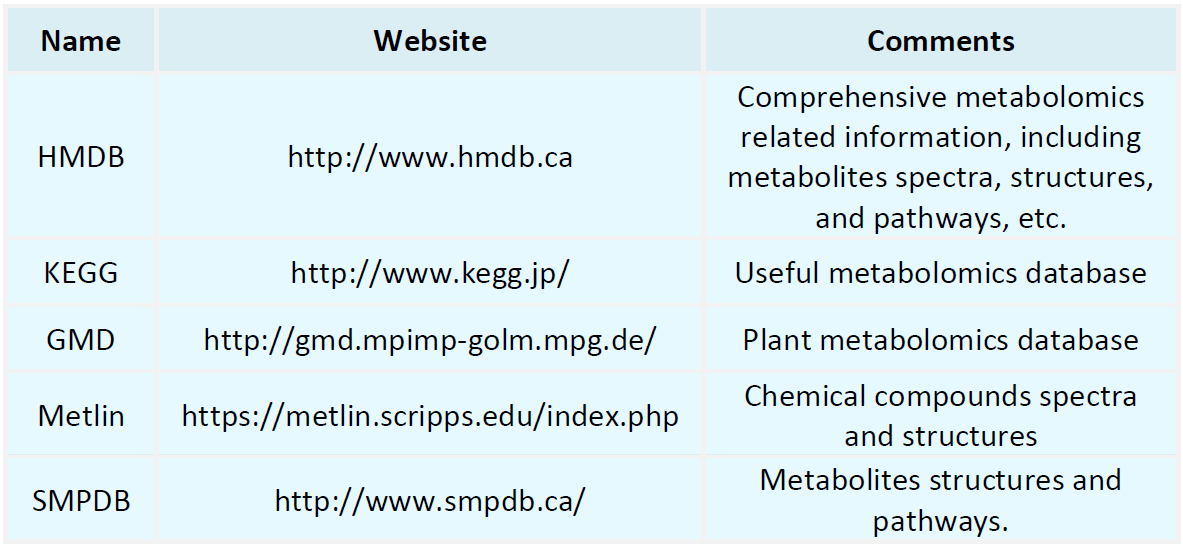Resources
Proteomics Databases

Metabolomics Databases

-
Mass spec metabolomics involves applying mass spectrometry techniques for the comprehensive analysis and quantification of metabolites in biological systems, enabling the characterization of metabolic profiles under various physiological and pathological conditions. As an essential branch of systems biology, metabolomics investigates the composition, concentrations, and dynamic fluctuations of small-molecule metabolites, including carbohydrates, fatty acids, and amino acids. Mass spectrometry, a cor......
-
CD spectra analysis is a widely used spectroscopic technique for characterizing the structures of chiral molecules, particularly biomacromolecules. Chiral molecules exhibit differential absorption of left- and right-handed circularly polarized light, enabling CD spectra analysis to provide structural insights into proteins, nucleic acids, and carbohydrates. Since biomolecular functions are often dictated by their higher-order structures, CD spectra analysis plays a vital role in structural biology, dr......
-
CPTAC proteomics is a pivotal approach in cancer research, enabling large-scale proteomic analyses to systematically investigate cancer-associated protein expression, post-translational modifications (PTMs), and interaction networks. Cancer is a highly heterogeneous disease governed by intricate regulatory layers, including genetic mutations, epigenetic modifications, and protein dysfunction. While traditional cancer genomics studies, such as those from The Cancer Genome Atlas (TCGA), have revealed ke......
-
• De Novo Mass Spectrometry Peptide Sequencing with a Transformer Model
De novo mass spectrometry peptide sequencing with a transformer model is a computational approach that leverages advanced mathematical models to enhance peptide sequence identification in mass spectrometry data. Mass spectrometry is a fundamental tool in proteomics, enabling the determination of amino acid sequences from enzymatically digested peptide fragments. However, peptide fragmentation is highly complex, and fragment ion formation exhibits inherent variability, which can limit the accuracy of c......
-
Differential Scanning Calorimetry (DSC) is a widely applied analytical technique in materials science, biochemistry, and pharmaceutical research. It is primarily used to investigate the thermodynamic properties of materials, assess the thermal stability of proteins, and characterize the thermal behavior of pharmaceutical compounds. In materials science, DSC enables the determination of glass transition temperature, crystallization temperature, and melting temperature in polymers, providing critical in......
-
Liquid Chromatography-Mass Spectrometry (LC-MS) integrates high-performance separation efficiency with high-sensitivity detection, enabling comprehensive analysis of complex biological samples. This technique first employs liquid chromatography (LC) to separate sample components based on their physicochemical properties, followed by mass spectrometry (MS) to detect and characterize these compounds with high accuracy. Beyond protein identification, LC-MS is a powerful tool for quantitative proteomics, ......
-
Glycan mass spectrometry is a powerful analytical technique used for the structural characterization and quantification of glycans, which are critical post-translational modifications widely found in proteins, lipids, and other biomolecules. By accurately measuring the mass and structural features of glycans, glycan mass spectrometry provides valuable insights into complex glycosylation patterns and their functional roles in biological systems. This technique has widespread applications in drug deve......
-
• Peptide Mass Fingerprinting (PMF)
Peptide mass fingerprinting (PMF) is a mass spectrometry-based technique for protein identification. It utilizes peptide mass spectra obtained from enzymatic digestion to characterize proteins. PMF is extensively applied in biomedical research, particularly in cancer studies, where it facilitates the identification and quantification of protein differences between cancerous and normal tissues. These differences help identify potential cancer biomarkers, which are essential for early diagnosis and pers......
-
• Mass Spectrometry-Based Metabolomics
Mass spectrometry-based metabolomics is a scientific methodology that employs mass spectrometry for the qualitative and quantitative analysis of metabolites in biological samples. As a key tool in life sciences, metabolomics provides dynamic insights into biochemical reactions by profiling changes in small-molecule metabolites. This approach enables scientists to elucidate metabolic pathways, biochemical networks, and physiological states, offering valuable perspectives on organismal function. Beyon......
-
LC-MS/MS metabolomics integrates liquid chromatography with tandem mass spectrometry to enable comprehensive identification and quantification of small-molecule metabolites in biological samples. Liquid chromatography facilitates the efficient separation of complex biological matrices, allowing metabolites of varying chemical properties and concentrations to be introduced into the mass spectrometry system in a controlled manner, thereby enhancing resolution and sensitivity. Mass spectrometry then dete......
How to order?







